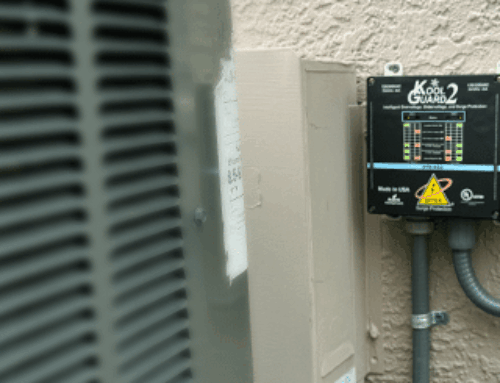Look around your home. Have you ever stopped to consider how many items are connected to a power source? Laptops and computers, mobile phones, game systems, TVs, appliances; plus, don’t forget your HVAC system, internet, and home security system. Even in our “wireless” homes, most items are connected in some way to a power supply. We are a society that is more dependent on the electrical grid than ever.
That’s why whole home surge protection has become a necessity for homeowners. Whole home surge protection is designed to safeguard all the electrical devices and appliances in your home from power surges. Power surges are sudden increases in voltage that can damage or destroy electronic devices and appliances. These surges can be caused by many factors, including lightning strikes, power outages, and the operation of high-powered electrical devices. Whole home surge protective devices (SPDs) are installed to divert excess voltage away from your home’s electrical system.
How It Works
Whole home surge protection differs from point-of-use surge protectors (like power strips) in that whole home protectors are installed at your main electrical panel and provide protection to all outlets and connected devices in your home. Some models can also be installed at secondary panels for added protection.
When a surge occurs, the SPD detects excessive voltage and diverts it safely to the ground path, maintaining a normal voltage level within the home’s electrical system. This ensures all appliances large and small, electronics, and home security systems are protected from unexpected electrical surges.
Power Surges Are Common
Power surges are often attributed to storms and lightning strikes, but external power surges come from several sources, not just lightning. Utility company grid switching and large power draws from neighboring homes or businesses are a common external source of residential power surges.
Sometimes external sources deliver smaller surges. As the power grid is more taxed with increased usage, the grid experiences unexpected surges to keep up with demand, and those surges often make it into homes and businesses. Over time, these small surges add up and cause major damage or even destroy items plugged into electrical outlets.
Power surges can also come from inside your home and can be triggered by your own devices. Internal surges and spikes sometimes occur when high-powered electrical items are turned on or off. HVAC systems and refrigeration units are the biggest culprits, but power tools, motors, and electrical heaters are other examples of items that can cause internal surges.
The bottom line is that power surges happen every day due to several factors and those surges take a toll on everything electrical—from appliances to laptops to expensive home systems like an HVAC.

Recognizing the damage these power surges are causing, and the increasing reliance upon electrical and sensitive electronic systems in our homes, the 2020 National Electric Code, or “NEC”, began requiring whole-house surge protection. NEC updates are based upon recommendations by a committee within the National Fire Protection Association (NFPA), which takes into account electrical hazards and fire risks. The group noted the increasing usage of sensitive electronic systems in homes like burglar alarms, video security systems, audio/video systems, HVAC systems, and data networks as a reason for requiring whole-house surge protection.
Here’s more information to help you understand the NEC guidelines.
Installation Considerations and Costs
It’s advisable to have a licensed electrician install whole home surge protection to ensure proper setup and compliance with electrical codes. A professional can ensure the surge protector is compatible with your home’s electrical system and meets the required standards (e.g., UL 1449 for surge protective devices). You should also check and maintain your SPD periodically to ensure it is functioning correctly. Some units have indicator lights or alarms to signal when they need replacement.
The cost of a whole home surge protector can range from $100.00 to $400.00, excluding professional installation fees. Then, professional installation can add $100.00 to $300.00 depending on the complexity of the installation.
While the initial cost of installation can be higher than individual surge protectors, whole home surge protection provides long-term savings by reducing the risk of damage to expensive electronics, appliances, the HVAC system, and other vulnerable home systems. The other factor to consider is the peace of mind you’ll receive knowing that your home has comprehensive protection and reducing your worry about power surges damaging your home’s electrical devices. The cost of whole home surge protection easily pays for itself as insurance to protect the crucial systems and electronics throughout your home.
Conclusion
Whole home surge protection is a vital investment for safeguarding your home’s electrical system and appliances from unexpected power surges. Installing an SPD at your electrical panel ensures a broader and more reliable defense against voltage spikes, providing peace of mind and potential long-term savings by preventing costly damage to your electronic devices and appliances.
DITEK provides surge protection solutions that are ideal for professional installations within all kinds of homes. These residential surge protection solutions safeguard against transient power surges and are designed for ease of installation and effectiveness. Ask your electrician about DITEK’s made in the USA surge protection products for your home.




